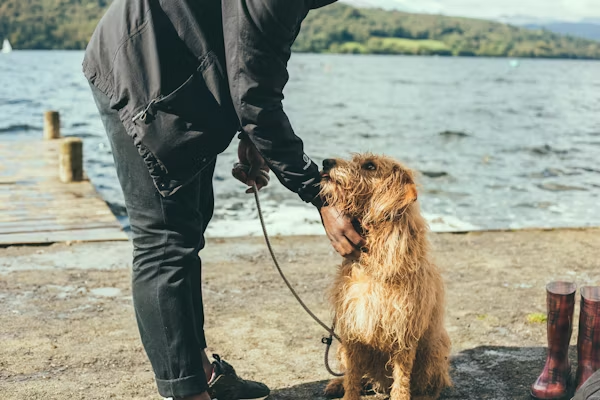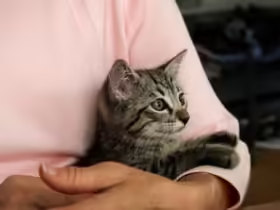Playtime isn’t just about fun for your dog or cat—it’s also an essential way to strengthen the emotional bond between you and your pet. Whether you have a hyperactive puppy, a curious kitten, or a laid-back senior pet, engaging in regular play sessions is a powerful way to enhance your relationship.
In this guide, we’ll explore how different types of play benefit your pet and how you can use playtime to build trust, improve behavior, and ensure your pet stays happy and healthy.
Why Playtime is Important for Bonding
Playtime offers several key benefits that go beyond just physical exercise. When done correctly, it strengthens your pet’s mental health, stimulates their instincts, and helps them view you as a companion they can trust.
- Mental Stimulation: Play keeps your pet mentally sharp, allowing them to engage in problem-solving activities.
- Physical Exercise: Both cats and dogs require exercise for a healthy body. Playtime is an enjoyable way to ensure they stay active.
- Stress Relief: Pets can experience anxiety and stress. Play allows them to release pent-up energy and stress, improving their emotional well-being.
- Trust Building: Regular, positive interactions during play can strengthen the bond between you and your pet, making them feel secure and loved.
Understanding Play Styles: Dogs vs. Cats
Understanding your pet’s natural play behavior is crucial to creating an engaging and enjoyable experience. While both cats and dogs enjoy play, their styles differ significantly:
- Dogs often prefer active, interactive play that involves chasing, fetching, or tugging. They love games that mimic hunting or working alongside their human.
- Cats are more independent and may enjoy solo play with toys. However, they can be stimulated by games that mimic hunting, like pouncing on a moving object.
Playtime Tips for Strengthening Your Bond with Your Dog
- Incorporate Interactive Toys
- Toys like frisbees, balls, and tug ropes are perfect for dogs who love movement and physical interaction. These types of games allow your dog to work off energy while interacting with you directly.
- Tip: For dogs that love to fetch, vary the location by switching from indoors to outdoors, so they’re stimulated by new environments.
- Engage in Tug-of-War
- Tug-of-war is an excellent way to bond with dogs who enjoy using their strength. This game taps into their natural instincts but should always be played with boundaries. Teach your dog to release the toy on command.
- Tip: Use a sturdy rope toy and encourage your dog to play with gentle pulls. If they get too aggressive, stop the game to reinforce positive play behaviors.
- Teach New Tricks Through Play
- Playtime doesn’t just have to be physical—teaching new tricks can be mentally stimulating for your dog. Integrate learning into your games by rewarding them when they catch the ball or follow a command during play.
- Tip: Use play as a reward. For instance, toss a toy after your dog successfully follows a command, linking positive behaviors with fun.
- Schedule Playtime Consistently
- Consistency is key to building a stronger bond with your dog. Try to schedule at least 15-30 minutes of dedicated playtime each day.
- Tip: Build a routine so your dog knows when to expect playtime. This helps reinforce their sense of security and structure.
- Participate in Active Outdoor Adventures
- If your dog enjoys the outdoors, incorporate play into your daily walks or hikes. Play fetch in an open field or explore new trails together.
- Tip: Bring toys like a flying disc or a ball launcher on your walks. Use natural obstacles like hills or lakes to make play more exciting.
Playtime Tips for Strengthening Your Bond with Your Cat
- Simulate Hunting with Wand Toys
- Cats have a natural hunting instinct, and toys that mimic prey are ideal for engaging them. Wand toys with feathers or mice-like toys trigger their natural instincts to chase and pounce.
- Tip: Let your cat “catch” the toy at times to mimic a real hunt. This keeps them engaged and reduces frustration.
- Laser Pointers for Active Cats
- Laser pointers are great for engaging high-energy cats. You can guide them to chase the light across the floor, helping them burn off energy.
- Tip: Ensure that the game has an endpoint. After using the laser, switch to a physical toy your cat can catch to satisfy their hunting instinct.
- Interactive Puzzle Toys
- Puzzle toys are an excellent way to stimulate your cat’s mind. These toys often hide treats or food and challenge your cat to figure out how to get the reward.
- Tip: Introduce puzzle toys slowly and reward your cat with treats to keep them motivated.
- DIY Playtime Ideas
- Cats can be entertained by simple homemade toys. Try making a toy from a crumpled piece of paper or using cardboard boxes for your cat to explore.
- Tip: Rotate toys regularly to keep things fresh and exciting for your cat.
- One-on-One Playtime Sessions
- Set aside time each day for interactive play with your cat. Even if it’s just 10-15 minutes, focused attention helps build trust and strengthens your relationship.
- Tip: Pay attention to your cat’s signals. If they seem uninterested, try different toys or take a break. Cats enjoy play when they feel in control of the situation.
Strengthening Bonds Through Non-Play Activities
While playtime is a fantastic bonding tool, don’t forget about other activities that can deepen your connection with your dog or cat. Here are some additional ways to build trust and companionship:
- Cuddle Time
- Many dogs and some cats enjoy cuddling with their humans. Use quiet time to gently pet or hold your pet, providing a sense of comfort and security.
- Training Sessions
- Training isn’t just for discipline—it’s also a great way to bond. Use positive reinforcement to teach your pet new tricks or commands. The time you spend working together will improve communication and trust.
- Grooming
- Regular grooming is another way to bond with your pet. Brushing your dog or cat not only keeps their coat healthy but also provides an opportunity for close, calming interaction.
- Snuggle Zones
- Create cozy areas around your home where your pet can relax near you. Pets enjoy having a special spot where they can unwind in your presence.
How Playtime Improves Behavior and Health
Engaging in regular play has a positive effect on both your pet’s behavior and overall health. Here’s how:
- Reduces Anxiety and Boredom
- Dogs and cats can get anxious or bored if they don’t have enough stimulation. Playtime provides an outlet for their energy and helps reduce destructive behaviors like chewing or scratching.
- Tip: Vary the types of play to keep them interested, from physical games to mental challenges.
- Promotes Healthy Weight
- Obesity in pets is a common issue, but regular playtime ensures that your dog or cat stays active and maintains a healthy weight.
- Strengthens Social Skills
- Playtime helps your pet become more social. Dogs, for instance, benefit from playing with other dogs or people, improving their ability to interact with the world around them.
Conclusion
Building a stronger bond with your dog or cat through playtime requires a balance of engagement, consistency, and understanding of their individual needs. By dedicating time each day to interactive play and focusing on activities that stimulate both their body and mind, you’ll foster a deeper connection that benefits both you and your pet.











Leave a Reply